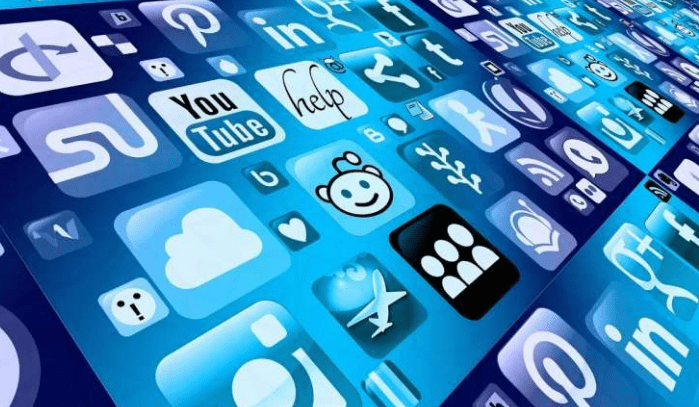From analytics and AI to 5G and Wi-Fi 6, here’s all the enterprise tech that took center stage at CES 2020.
Bill Detwiler: Well, it’s the final day of CES 2020, and I’m here with Dan Patterson, formally with TechRepublic and ZDNet. Now with CNET and CBS News, to talk a little bit about the tech we’ve seen this week. Dan, you cover a lot of privacy and security, and it’s always an important issue, especially at CES, as we talk about technology blending into everyday objects. What have you seen here at the show that brings to light those issues of data privacy, data security?
Dan Patterson: Well, what’s really interesting to watch is this evolution of CES itself. This is the Consumer Electronics Show. Usually, we expect products and there are thousands of products here, but Bill, as you know, at TechRepublic, you cover technologies that emerge into the mainstream and I think that that is my overarching theme this year–that technology that used to be for only BizTech or really geeky people, is now embedded in the world around us.
The trends that I’m really seeing in terms of consumer data and privacy is that, look, your face is the future. Not just your face, your voice, your body, even your sex life is being tracked and monitored by massive technology firms, which means that something we’ve always said in the BizTech world forever, consumers are now experiencing this balance, this trade off, between convenience on the one hand, and security and privacy on the other hand.
And when I walk around the show floor here at CES, I mean, shows floors because there are so many. I see that theme over and over and over again, whether it’s with Ring or with Facebook or other major technology firms, the big theme is that your data is your data. Now, whether these companies are telling the truth or not, (Facebook), is debatable, but security and privacy is all of a sudden not a nerdy thing–it is a mainstream trend.
Bill Detwiler: Yeah, and you brought up sex tech, and I think that’s something at this CES that’s new this year. There was a little bit of controversy last year around the technology. One of the award winners from last year had their award taken away by CTA and then reinstated last year, and this year they’ve really expanded that section of technology here on the show floor, so lots of companies here are doing that. And this is just like your health data, just like any other type of personal data. This is really intimate information that you don’t necessarily want to share with the world.
I think that is a really good example of how different devices are collecting new types of data. Now, you’ve been on the show floor quite a bit. What’s the coolest thing you’ve seen? I mean, I know you said, like Dan says, there are so many exhibits here. There’s Tech West, there’s Tech East, there’s Tech South now I think, that it’s really impossible–even for us–we’re here a week. It’s really impossible for us to actually see everything. But what are some of the cool things that you have seen?
Dan Patterson: When we look at some of our colleagues over at CNET like Dan Ackerman and some of the others, we’ve covered some really awesome laptops. There is this zero to 200 mile-an-hour electric motorcycle–that’s super cool. These cockpits in a Delta airline that have tech built into everything, so that stuff is all awesome. But it’s also very mainstream, and it’s pretty easy to find.
For me, the coolest stuff is, if you’ve ever been to CES before, you know what Eureka Park is. If you’ve never been to CES, Eureka Park is kind of the low-rent stage. Look, these are awesome companies doing really interesting things, but they might not have the money to afford this bright, shiny, main stage type of presence. So, I love going to Eureka Park way into the back and finding the companies that have very little budgets.
This morning I spoke with a gentleman who has skin in the game. He is not a [venture capitalist], he doesn’t come from a ton of cash, he has some family money, and he invested in this really interesting device. What is this device? It is a wireless charging port that goes between your bed and your box spring, and you put your Apple iPhone down, your Apple watch, your other wireless charging devices.
That sounds OK, wireless charging, that’s nice. What did Apple try to do, and failed at? Developing a wireless charging pad. So to answer your question, one of the coolest things I saw was this guy who has real skin in the game, whose company has developed something that one of the most valuable companies in the world, failed to do. I loved that because it was the true spirit of innovation that I think CES is all about.
Bill Detwiler: You do see really great innovations like here at the show. You also see devices that you wouldn’t think have a lot of technology built into them, but they actually do. And that’s one of the trends that we’ve seen at CES for the past decade, devices just getting smarter. And that’s what we talk about with ambient technology. Technology is just blending into the background, into those devices that we all use every day.
I saw Kohler and Harman Kardon have a smart speaker that’s built into a shower head. I don’t know if I need a smart speaker in my shower head, but it is cool. AARP is showing off a lot of technology to help elderly folks, AR and VR applications that are really cool. VoiceIt, they have an application with AARP that helps translate speech for people who have a really hard time vocalizing full speech. They might have a motor neuron disorder, a stroke or Parkinson’s disease that makes it hard for them to talk. This is a really cool way for them to actually use voice assistants like Alexa and like Apple Siri or like Google Assistant. So, that’s really kind of cool.
There’s also a smart beer fridge. Do you need a smart beer fridge? I don’t know if you need a smart one, but it sounds cool. Keurig has something, Drinkworks, they’re showing off here. Not really brand new, but hey, they want to do what they did for coffee and tea for cocktails. So you put this pot in, you hit the button and you get drinks out of it.
And then you have, like you said, these big splashy kind of announcements. Samsung showed off lots of stuff, including Neon. It’s not a digital assistant. These are designed to be artificial people, digital friends. I don’t know if I necessarily want one of them to be my friend. That sounds a little creepy.
But, it’s all of those ways that you don’t necessarily see tech front and center. It’s in the device, it’s integrated, it’s built in. Lots of smart toothbrushes, lots of smart toilets, lots of smart health tech, like you were talking about. I think that’s the biggest trend for me. It’s really been how have these devices evolved over time? How have enterprise technologies that we talk about a lot: Cloud, analytics, augmented reality (AR), 5G, Wi-Fi 6–how are those technologies enabling some of the gadgets that we see on the show floor?
Dan Patterson: To add to that, Bill, what was really cool about CES in the past, it’s still cool about CES now, you can find a lot of really interesting early adopter gadgets. It is definitely an event for early adopters. However, when we talk about peripheral computing and we talk about things that are embedded into the world around us, we’re also talking about being more inclusive, which means that technology can have an impact not just on the stereotypically young person, but people who are older, people of color, people who have been marginalized in our society.
We’re now seeing tech start to understand, hey, we could build and develop products that make their lives easier. So we’re not just making things like a flashy device for you to spend a couple of hundred bucks on, we’re making things that make your life, and hopefully, the world a better place.
This article has been published from a wire agency feed without modifications to the text. Only the headline has been changed.
[ad_2]
Source link





